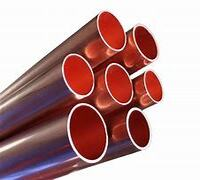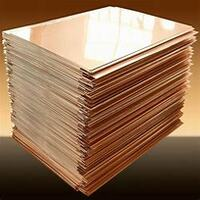1. Introduction
In the past 48 hours, a major outage at a hyperscale data center in Northern Virginia highlighted how even minor grounding failures can cascade into massive service disruptions. The incident, traced back to inadequate earthing during a lightning surge, has reignited industry focus on high-integrity grounding materials—especially copper rod-based solutions. As data centers grow denser and more critical, the demand for reliable, corrosion-resistant earthing components like copper earth rods has never been higher.

While copper is widely known for electrical wiring and plumbing, its role in specialized grounding applications remains underappreciated. This article dives into the niche yet essential use of copper rod in advanced earthing systems, particularly for mission-critical facilities like data centers, telecom hubs, and industrial control rooms.
2. The Role of Copper Rod in Modern Earthing Systems
Earthing (or grounding) ensures electrical safety by providing a low-resistance path for fault currents to dissipate into the earth. In sensitive environments, even milliohm-level resistance variations can compromise system integrity. That’s where copper rod shines.
Pure copper rods—often called rod copper or copper round bar—are used as vertical ground electrodes driven deep into the soil. Their high conductivity (58 MS/m) and excellent corrosion resistance make them ideal for long-term installations. However, due to cost, many engineers now opt for hybrid solutions like copper bonded earthing rod or copper clad steel ground rod, which combine steel’s tensile strength with copper’s surface conductivity.
- Copper bonded steel: A steel core electroplated or molecularly bonded with a thick layer of copper (typically 0.25mm or more).
- Copper clad earth rod: Similar to bonded versions but often manufactured via co-extrusion for uniform cladding.
- Pure copper earth rod: Used in highly corrosive soils or where maximum longevity is required, despite higher copper rod price.
3. Why Data Centers Prefer Copper-Based Ground Rods
Data centers require ultra-low impedance grounding to protect sensitive servers and prevent electromagnetic interference. Copper earth rods deliver consistent performance over decades, unlike galvanized steel alternatives that degrade faster.

Moreover, standards like IEEE 80 and IEC 62305 explicitly recommend copper or copper-clad materials for grounding electrodes in critical infrastructure. The copper bonded ground rod offers the best balance of durability, conductivity, and cost—making it the go-to choice for new builds.
When comparing earthing rod price points, pure copper rods cost significantly more than copper clad steel earth rod options. Yet lifecycle analysis often favors copper-bonded variants due to their 30+ year service life and minimal maintenance.
4. Complementary Components: Copper Strips and Bus Bars
A complete earthing system doesn’t rely solely on vertical rods. Horizontal conductors—like flat copper strip or copper earth strip 25x3mm—are bonded to rods to create a meshed grounding grid. These copper metal strips ensure equipotential bonding across racks, UPS systems, and structural steel.
Commonly specified types include:
- Thin copper strips (e.g., 1mm copper strip) for internal bonding.
- Beryllium copper strip or copper beryllium strip for spring contacts in grounding clamps.
- Nickel plated copper strip for enhanced corrosion resistance in humid server rooms.
Copper bus bars—often flexible copper bus bar variants—are used inside power distribution units to interconnect grounding points with minimal resistance. Unlike stripping copper wire for scrap, these components are engineered for precision conductivity, not recyclability.

Note: While phrases like ‘best way to strip copper wire’ or ‘burning copper wire for scrap’ trend in recycling circles, they’re irrelevant—and dangerous—in professional earthing contexts. Proper grounding uses solid, unaltered copper conductors.
5. Installation Best Practices and Material Selection
Installing a copper earth rod isn’t just about driving it into the ground. Soil resistivity testing, rod depth (often 3m+), and exothermic welding (using copper to copper welding rod or copper brazing rod) are critical for low-resistance joints.
For permanent, high-strength connections, professionals avoid mechanical clamps in favor of copper rod welding via exothermic processes. Here, copper to copper brazing rods or welding rod copper ensure molecular bonding without increasing joint resistance.
When sourcing materials, terms like ‘copper strip near me’, ‘roll of copper strip’, or ‘copper bars for sale’ may appear in procurement searches—but specifiers should prioritize certified products meeting ASTM B75 (for seamless copper tube) or BS EN 50164 (for earthing components).
6. Cost vs. Performance Considerations
While copper rod price and copper strip price fluctuate with LME markets, investing in quality earthing pays off. A failed ground can cause equipment damage costing millions—far exceeding the upfront cost of copper bonded or pure copper solutions.
For budget-conscious projects, copper clad steel ground rod offers nearly 95% of pure copper’s performance at 40–60% of the cost. Meanwhile, recycled or stripped copper (e.g., from ‘stripping wire for recycling’) should never be used in primary grounding paths due to unknown purity and mechanical integrity.
7. Conclusion
From copper earth rod to flexible copper bus bar, copper-based components form the backbone of reliable earthing in high-stakes environments. As data centers expand globally, the demand for corrosion-resistant, highly conductive grounding materials will only grow. Whether you choose pure rod copper or a copper bonded alternative, prioritizing quality over short-term savings ensures decades of safe, uninterrupted operation.
Our Website founded on October 17, 2012, is a high-tech enterprise committed to the research and development, production, processing, sales and technical services of ceramic relative materials such as Why. Our products includes but not limited to Boron Carbide Ceramic Products, Boron Nitride Ceramic Products, Silicon Carbide Ceramic Products, Silicon Nitride Ceramic Products, Zirconium Dioxide Ceramic Products, etc. If you are interested, please feel free to contact us.

